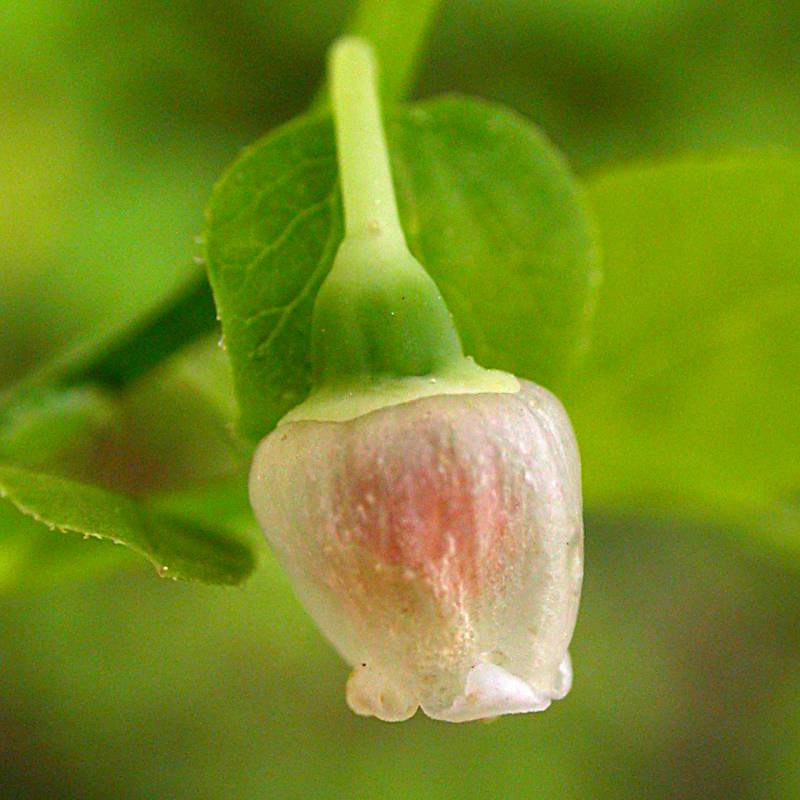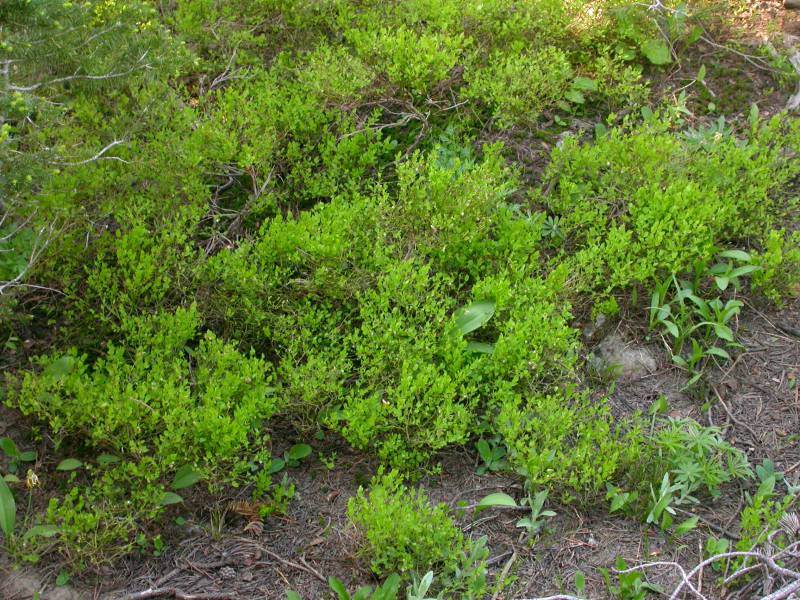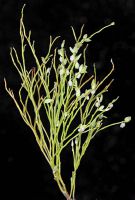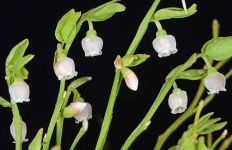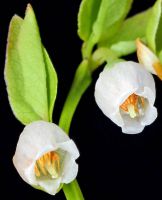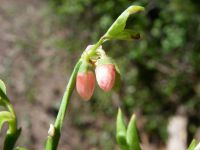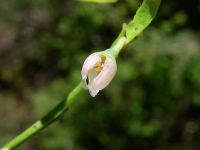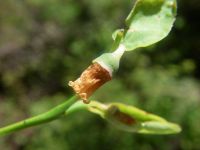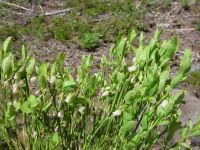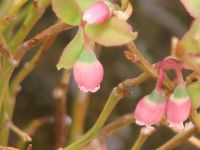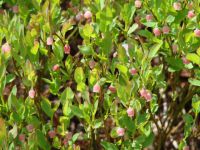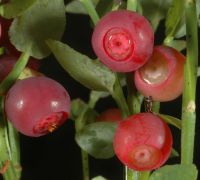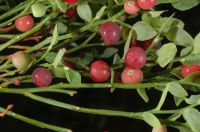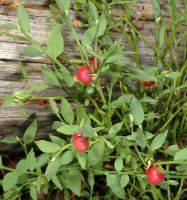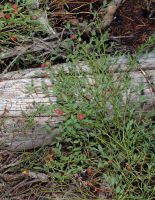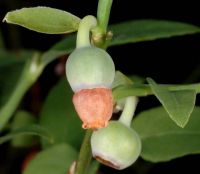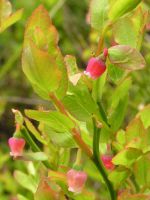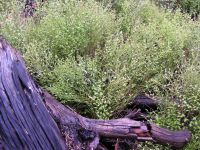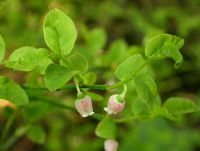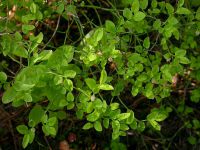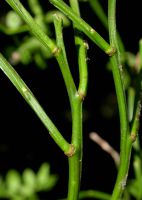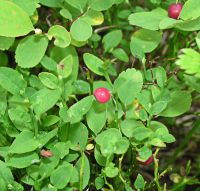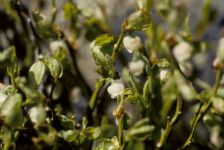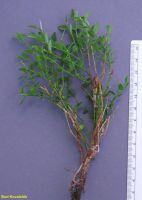Distribution: Occurring on both sides of the Cascades crest in Washington; British Columbia to California, east to the Rocky Mountains and northern Great Plains.
Habitat: Open, dry forests, mid- to high elevations in the mountains.
Flowers: May-August
Origin: Native
Growth Duration: Perennial
Conservation Status: Not of concern
Pollination: Bumblebees, bees
Deciduous shrub, more or less matted, 1-2.5 dm. tall, the branches numerous, slender, broom-like, strongly angled, greenish or yellowish-green, usually glabrous.
Leaves lanceolate to ovate-lanceolate, 8-15 mm. long, finely serrulate, light green, usually glabrous, conspicuously veiny on the lower surface.
Flowers solitary in the axils of the lowest leaves of the youngest shoots, short-petiolate; corolla entire, pinkish, broadly urn-shaped, about 4 mm. long; anthers with awns and terminal pore-bearing tubes; ovary inferior.
Fruit a bright red berry, globose, 3-5 mm. broad.
Publication: Contr. U.S. Natl. Herb. 5: 103. 1897.
Vaccinium myrtillus L. var. microphyllum Hook.
PNW Herbaria: Specimen records of Vaccinium scoparium in the Consortium of Pacific Northwest Herbaria database.
WA Flora Checklist: Vaccinium scoparium checklist entry.
OregonFlora: Vaccinium scoparium information.
E-Flora BC: Vaccinium scoparium atlas page.
CalPhotos: Vaccinium scoparium photos.
USDA Plants: Vaccinium scoparium information.

